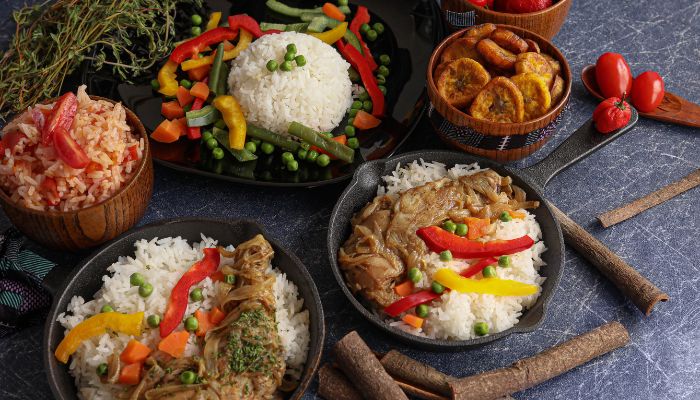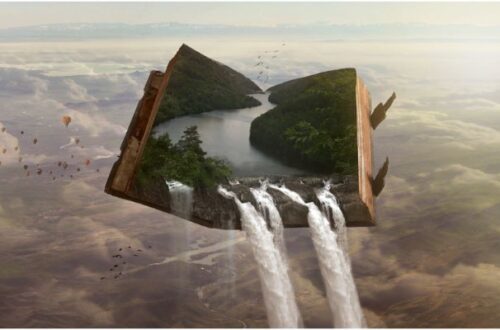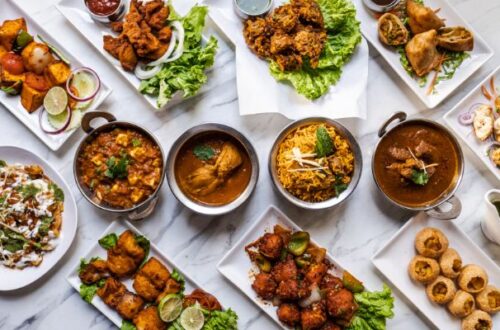
5 Questions to Ask for Better Cultural Worldbuilding
No matter what genre you write, one of the most important parts of writing is understanding the world you’re writing in. Of course, stories set in our world have the advantage of having the world already made and ready to be researched. When writing Science Fiction or Fantasy, on the other hand, there’s the extra challenge of practically starting from scratch. Whether it be for far-future cultural shifts or entirely alien worlds, one of the great joys (and challenges) of SFF is worldbuilding.
While coming up with unique geography and magic systems is a big part, an even more important part of worldbuilding is, arguably, writing believable and fleshed-out cultures. Culture is what gives your world a sense of history and depth, helping to define everything from politics to individual character beliefs and personalities.
Building a culture that feels unique and deep can seem daunting, so here are a few key points to focus on that can take your fantastical culture from bland and shallow to deep and interesting.
1. What is the belief system?

Let’s start with the one that affects all others.
Every culture has a belief system, which boils down to the religion, spirituality, and the core values of the people. These belief systems will affect just about everything else in the culture, too, from aesthetics to customs and relations with other cultures.
What does the culture believe about the importance of family? How about religion or spirituality? What is consider taboo or immodest? What is their stance on war?
Building the belief system and understanding the culture’s stance on various issues will help build out the other aspects of culture, and help inform the other aspects of culture and the values of the characters populating it.
2: What is the flavour profile?

I’ve written a full blog on writing fictional foods here, and it’s one of my favourite details to think about when writing a new culture.
Every culture has a different flavour profile, based on things like available ingredients, trade routes, climate, belief systems, and even whether or not the culture is nomadic or sedentary. Also, flavour profiles are more than just “bland vs. spicy.” Some cultures prefer bold, complex flavours with loads of seasonings and melded ingredients. Some prefer something more subtle, with few spices and simpler tastes.
Cultural foods frequently come down to location, but are also heavily influenced by things like trade and immigration.
What does this mean for you when worldbuilding? Well, take a look at where your culture is, and look at various real-world cultures with similar climates, resources, and societies to yours to see what they have in common and go from there.
Another thing to consider is how food is consumed. Is your culture family-oriented and place high value on communal meals? Is someone given a seat of honour at the table, or is everyone considered equal?
Understanding the culture’s relationship with food can add a strong punch of flavour (pun intended) to your worldbuilding.
3. What do they wear?

This, of course, is going to be heavily dependent on climate. People who live in the arctic are going to wear very different clothing than people who live in a desert. It will also be heavily dependent on what materials are available.
However, fashion and clothing are also a huge part of culture.
Do certain colours, materials, or patterns have significance? Are there articles of clothing that are worn at all times or only at certain celebrations? Are there certain types of clothing only worn by the old or the young?
This also connects to other personal aesthetics, like how hair is worn and jewellery choices.
Clothing can signify a great number of things, and the type of clothing worn by your characters can tell the reader a lot about their culture.
If you’d like to read some of my tips for what questions to ask when creating fictional clothing, you can check out my post on it here.
4. What does their architecture look like?

Like clothing, architecture is heavily influenced by environment. For example, you won’t see many buildings made of wood in areas with no trees.
However, the style of the buildings can be another way to show culture. Even in areas with similar climates, you will see different styles of architecture dependent on the culture living there. Just look at the vast differences of architecture throughout the middle east and north Africa, most of which shares a similar climate.
Are the buildings square, or more circular? What kind of roofs do they have? What are they made out of? Are the buildings covered in ornamentation and treated like works or art and expression, or are they more utilitarian?
There are many ways to show culture through architecture, and it can be a very fun and distinct way to show more about your world.
5. How do they relate to other cultures?

Let’s talk politics.
Unless you’re writing about a very isolated culture, they will be interacting with other cultures. (And, if they are a very isolated culture, odds are they have a reason for being isolationist, which still relates to this.)
Trade, immigration, war, and other political issues are something that all cultures, both big and small, have to deal with. Even if they’re only dealing with a nearby village, odds are they’re going to have different customs, even if they’re small and seemingly insignificant.
A big part of this links back to belief systems. Do their systems clash or align with the systems of the cultures around them? How warlike are they? What customs do they have that are odd to other cultures, and what customs do other cultures have that are odd to them?
Showing how the culture interacts with other groups helps bring depth and interconnectivity to your world, making it feel more alive and realistic.
How is this all done, then?
These may be good aspects to add, but how do you do it effectively?
Well, the first big step to take is research. Watch documentaries. Read books and articles. Look at cultures that have a similar vibe to the culture you want to write, and learn what makes them work. Pull inspiration from the real world, blend things together, and make it your own.
The world is a wide and diverse place, full of inspiration and countless cultures. By adding the right details, your story can have rich and detailed cultures, too.
If you’d like to read more on cultural worldbuilding, check out this post from redraggedfiend.com, which talks about some other aspects of writing cultures.
For writing updates and a peek behind the scenes, sign up for my newsletter here!






One Comment
Pingback: